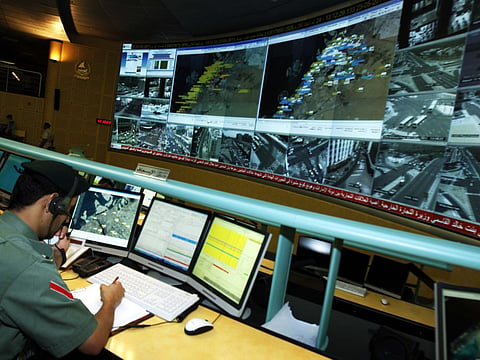Dubai Police use footprints to nab criminals
Dubai Police use Artificial intelligence to zero in on walking style, rotation of feet and other markers

Dubai: Kinetic footprint technology has helped the Dubai Police identify suspects in 26 cases since it was approved last year, said a top police officer.
Major Dr Hamad Al Awar, director of Pictures and Video Analysis in the police’s Forensic Science and Criminology Department, said offenders can no longer hope to escape unnoticed even before committing the crime in Dubai, thanks to the technology.
“The science behind kinetic foot printing demonstrates that every human being has a way of moving that is unique to them. [The technology] uses special algorithms to identify the suspect by studying his biometric [walking pattern],” Major Dr Al Awar said.
Every human being has a way of moving that is unique to them. [The technology] uses special algorithms to identify suspects by studying biometric [walking pattern].”
Offenders can be identified when their images are captured by a special 3D camera and accurate measurements of how their joints move along with unique physical characteristics such as gait, excessive rotation of the foot and other markers. This will then be compared with the conduct of the suspects, for instance, how they walk.
Kinesiology is the study of the human and non-human, animal body movement, performance and function.
The kinetic footprint system uses artificial intelligence to arrive at its conclusions, thus making it more difficult for the offender to dodge any attempts at identifying them, for instance, by altering the way they walk.
“With cameras everywhere now, it is hard for the offender to change his walking style,” Major Dr Al Awar added.
Dubai Police are the first in the Middle East to use body movement identification to solve crime. “Dubai Police are one of the first police departments in the world to send specialists to study this method since 2010,” Major Dr Al Awar said.
In the absence of conventional evidence such as fingerprints, Dubai Police can use security camera footage converted into three-dimensional images, and if matched to movement patterns of a suspect, this can provide hard evidence.
Earlier, Dubai Police had told Gulf News that the police command room is acquiring new artificial intelligence and biometric facial recognition software to help predict crimes.
Brigadier Kamil Butti Al Suwaidi, Director of the Operations Department, said the command room will include a smart security system to prevent and respond to criminal activity as swiftly as possible.
The new technology may not prevent future crimes as depicted in Hollywood movies, but it will go a long way in helping officers do their job, police said
Thanks to highly sophisticated biometric software, unique facial characteristics of known or wanted criminals can be automatically recognised via an international database through close-circuit television cameras installed in public places which are common in major cities around the globe.
Dubai is no exception, said Brig Al Suwaidi, and when similar biometric software is triggered, alerts will be sent to police officers on the beat, ensuring quicker, more immediate response to prevent crimes.
The new upgrade will also help locate wanted criminals via CCTV searches conducted in public areas via the command room.
Case history
A thief stole a woman’s handbag but couldn’t be facially identified by the CCTV footage. But what gave him away was his walking style.
In another case, a woman wearing a niqab conned a salesman in a jewellery shop. Though she denied that it was she in the [CCTV] footage, her body movements were analysed and the kinetic footprint technology helped prove that it was indeed she who committed the scam.
Ear prints and shape of hand
Major-General Dr Ahmad Eid Al Mansouri, director-general of Police’s Forensic Science and Criminology Department, said Dubai Police are working on developing other technologies as well to identify suspects by ear print and shape of the hand.
“We are working to develop many ways to identify suspects using the latest technology,” Maj-Gen Al Mansouri said.
He added that these approaches, however, require clear and high-resolution footage to identify the suspects.
Sign up for the Daily Briefing
Get the latest news and updates straight to your inbox

